In recent years, the gaming industry has experienced a significant transformation, not only in terms of gameplay and graphics but also in the way games are created. One of the key driving forces behind this transformation is the integration of artificial intelligence (AI) into game art production. AI has revolutionized the creative process, enabling developers to produce visually stunning and immersive worlds at an unprecedented pace.
In this blog post, we will explore the role of AI in game art production and delve into the ways it is transforming the industry.
Integrating AI into Game Art Production
The successful integration of AI in game art production lies in finding the right balance between AI-generated content and human artistic input. By leveraging AI as a tool and maintaining creative vision, developers can unlock new levels of creativity, efficiency, and player engagement. Here is how AI is integrated into game art production services.
1. Procedural Generation and World Building
Procedural generation is a technique that uses algorithms to create content dynamically, allowing game developers to generate vast and diverse game worlds efficiently. AI plays a crucial role in procedural generation by automating the creation of terrain, landscapes, buildings, and other environmental elements.
By leveraging AI, developers can generate realistic and visually appealing game environments that would otherwise be time-consuming and labor-intensive to create manually. This approach not only saves time and resources but also allows for the creation of unique and immersive experiences.
2. Character and Creature Design
AI has also made significant advancements in character and creature design. Traditionally, artists would spend countless hours crafting and refining character models, animations, and textures. However, with AI-assisted tools, developers can streamline this process.
AI algorithms can analyze existing character designs and generate new variations based on predefined parameters, saving artists valuable time and effort, like Leonardo AI. Furthermore, AI-powered animation tools can generate lifelike movements and behaviors, enhancing the realism and immersion of game characters.
3. Texture Creation and Material Synthesis
Creating high-quality textures and materials is a vital aspect of game art production. AI has revolutionized this process by enabling the generation of textures and materials through machine learning algorithms. These algorithms can analyze vast databases of existing textures and learn to synthesize new ones based on patterns and styles.
This allows developers to create a wide range of textures quickly and efficiently, reducing the need for manual creation or searching for pre-existing assets. The result is improved visual fidelity and more engaging game worlds.
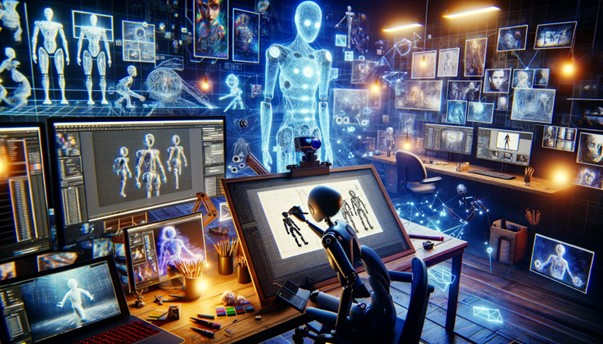
4. Lighting and Rendering
Lighting and rendering are critical components of game art production, as they significantly impact the atmosphere and overall visual quality of a game. AI-powered algorithms can simulate realistic lighting conditions, allowing developers to create stunning visual effects and realistic shadows.
Additionally, AI can optimize rendering processes by automatically adjusting settings and parameters to achieve the best possible performance without sacrificing visual quality. This optimization enables games to run smoothly on a wide range of hardware configurations, enhancing accessibility and player experience.
5. Quality Assurance and Bug Detection
Ensuring the quality and stability of a game is a complex task, especially as games become more complex and expansive. AI can assist in quality assurance by automating the detection of bugs, glitches, and other issues.
Machine learning algorithms can analyze gameplay data, identify patterns, and predict potential issues before they occur. This helps developers streamline the debugging process and deliver more polished and reliable games to players.
6. Player-Driven Content Generation
AI not only aids developers in creating game content but also empowers players to create their own content. AI-driven tools can allow players to generate custom levels, characters, and even entire game worlds. This fosters creativity and encourages community engagement, as players can share and exchange their creations, expanding the lifespan and replayability of games.
Challenges and Limitations of Integrating AI
While the integration of AI in game art production offers numerous benefits, there are also several challenges and limitations that developers need to consider. Let’s explore some of these potential challenges:
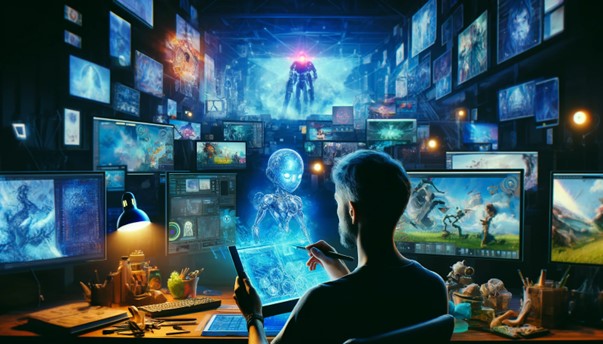
1. Lack of Creative Control
AI-driven tools and algorithms can automate certain aspects of the creative process, but they may not always capture the artist’s vision accurately. Artists may feel a lack of creative control when relying heavily on AI-generated content.
Balancing the use of AI with human artistic input becomes crucial to maintaining the desired artistic direction and maintaining a unique visual style.
2. Ethical Considerations
As AI algorithms become more advanced, there is a risk of unintentionally perpetuating biases or stereotypes in-game art. AI models are trained on existing data, and if that data contains biases, it can be reflected in the generated content.
Developers must be vigilant in ensuring that AI systems are trained on diverse and inclusive datasets to avoid reinforcing harmful stereotypes or discriminatory representations.
3. Technical Constraints
Implementing AI in game art production may require significant computational resources. Training AI models and running complex algorithms can be computationally intensive, which may pose challenges for smaller game development studios with limited resources. It may also impact game performance if not optimized properly.
4. Data Availability and Quality
AI algorithms rely heavily on large datasets to learn and generate content. Acquiring high-quality training data can be a challenge, especially for smaller studios or niche genres. The availability of diverse and well-curated datasets directly impacts the AI’s ability to generate accurate and varied content.
5. Learning Curve and Skill Requirements
Integrating AI into game art production requires expertise in both AI and traditional game development. Developers need to have a solid understanding of AI algorithms, data preprocessing, and integration techniques. The additional skill requirements and learning curve associated with AI implementation may pose challenges for developers who are not familiar with these technologies.
6. User Acceptance and Preference
While AI-generated content can save time and resources, there is a subjective element to art and aesthetics that may not always align with players’ preferences. Some players may prefer the human touch and craftsmanship of handcrafted art over AI-generated content, which could impact the reception of games relying heavily on AI-generated assets.
7. Adaptability and Unpredictability:
AI algorithms are trained on existing data, which means they may struggle to generate content that deviates significantly from what they have been trained on. This can limit the algorithm’s ability to produce truly novel or groundbreaking art. Additionally, AI models can be unpredictable, generating unexpected or undesirable results that may require additional iteration and refinement.
Conclusion
In conclusion, integrating AI in game art production has brought significant advancements and opportunities for the gaming industry. From procedural generation and character design to texture creation and lighting, AI has revolutionized the creative process, enabling developers to produce visually stunning and immersive game worlds more efficiently than ever.
However, it is important to acknowledge the challenges and limitations that come with using AI in game art production. Maintaining creative control, addressing ethical considerations, managing technical constraints, ensuring data availability and quality, acquiring the necessary skills, and navigating user preferences are all factors that developers must carefully consider.

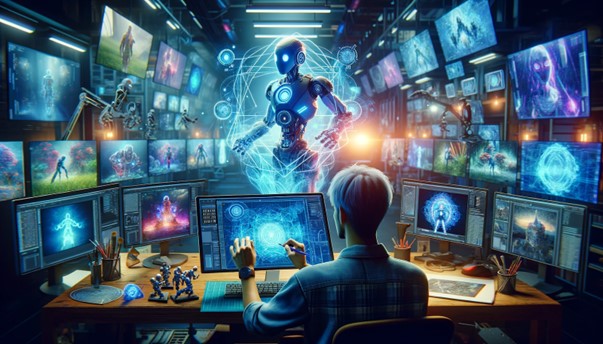
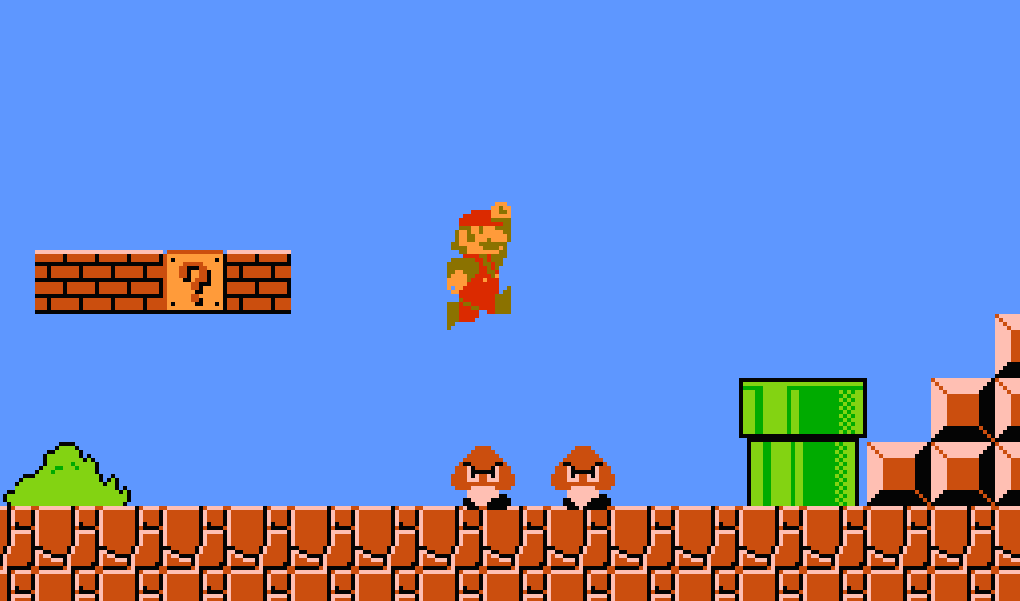






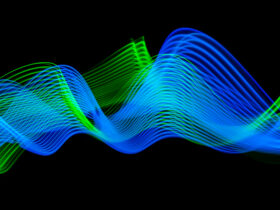
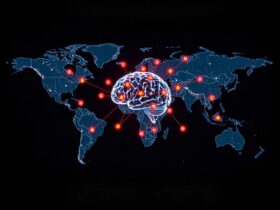
Thank you for sharing this insightful post! It’s amazing to see how AI is transforming game art production, pushing the boundaries of creativity while also streamlining processes. The way AI enhances both artistic expression and slot machine game development efficiency is truly fascinating. I’m excited to see how this technology continues to evolve in the gaming industry. Great read!